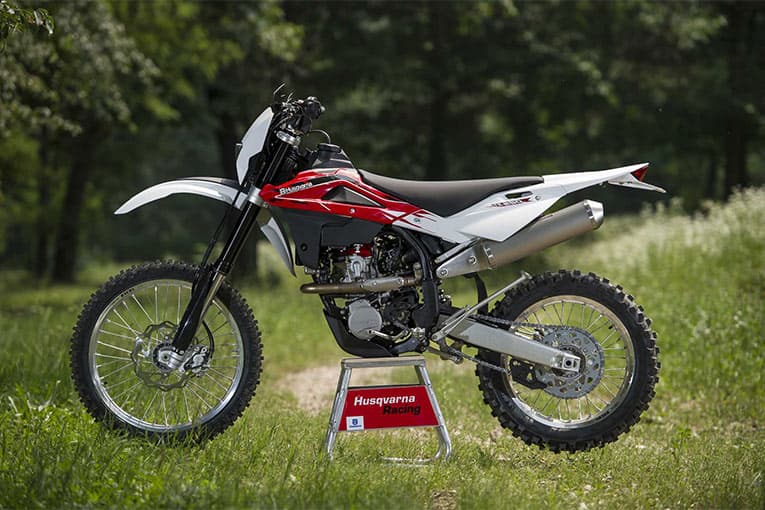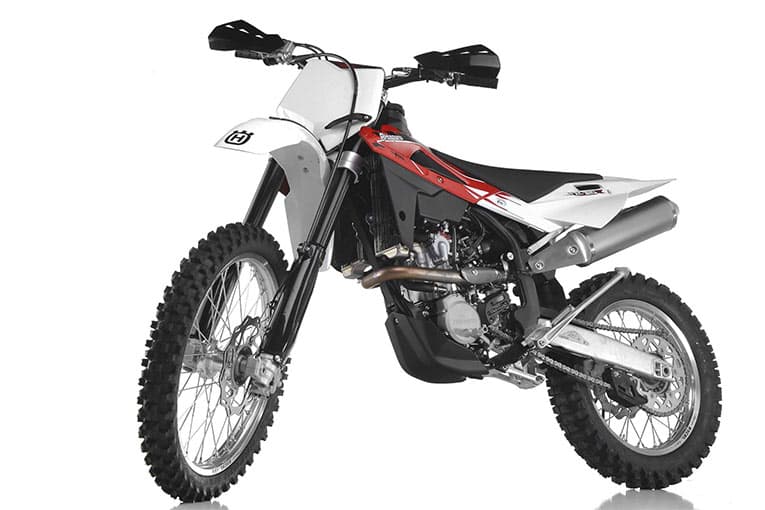Husqvarna Motorcycles offers the TXC 250 R and TXC 310 R models that have been purpose-designed for the specific demands of cross-country racing especially for the North American market. Unlike the competition enduro bikes, these machines are not homologated for road use. This means they are able to dispense with lighting and instrumentation, which translates into a weight saving of some 4 kilograms compared to the competition enduro models. For the 2013 season, Husqvarna Motorcycles has given the two cross-country enduro models a comprehensive overhaul too, particularly their liquid-cooled single-cylinder four-stroke engine. Like both of the new competition enduro machines, the cylinder head on the TXC 250 R and TXC 310 R was also redesigned with the aim of further increasing power and torque delivery. Throttle response and rideability have again been improved by the new electronic fuel injection system from Keihin.
With a weight of just 22 kilograms, Husqvarna Motorcycles continues to produce one of the lightest power units in the competitive field in the form of the powerful single-cylinder four-stroke engine partnered coupled to a six-speed transmission. The engine performance of the two new cross-country enduro bikes has been considerably enhanced, as the power output and torque curves clearly illustrate. Compared to their predecessors, output and torque have received a major boost over the entire usable rev range on both the TXC 250 R and the TXC 310 R. The additional “R” in the model names is a further indication of the notable power increase. The new TXC 310 R benefits from nearly 5 per cent more maximum output and an increase in peak torque of around 8 per cent, while maximum output and torque on the new TXC 250 R have both been upped by approximately 8 per cent. The additional power and torque are primarily a result of the redesigned cylinder head, the new fuel injection system as well as the exhaust manifold’s new layout.

The chassis on the new TXC 250 R and TXC 310 R models is built around a torsionally rigid steel frame consisting of round, oval and rectangular tubing, as it is on all Husqvarna off-road models. For even greater structural rigidity, the frame is additionally reinforced around the steering head with 25CrMo4 chromoly steel plates. At the front, an upside-down fork from Kayaba with 48-millimetre stanchion tubes and adjustable compression and rebound handles the tasks of wheel location. As on the TC 250, this fork features closed-cartridge damping, as opposed to the open-cartridge system on the TE 250 R/ TE 310 R. A Kayaba central spring strut with linkage system is responsible for wheel suspension and damping at the rear. To allow the set-up to be fine-tuned for specific route requirements, not only can the spring strut’s preload be varied but its compression and rebound can also be adjusted for varying speeds.
The suspension and damping tuning on the TXC 250 R and TXC 310 R differs from the TE 250 R and TE 310 R competition enduro models as it has been geared specifically to cross-country racing. To optimise grip and traction, they also leave the factory with competition tyres sized at 80/100-21″ at the front and 110/100-18″ at the rear. Two different engine maps (accessory) cater to the requirements of competitive racing by making power delivery either extra-progressive or more direct and aggressive. The rider is able to toggle between both maps using the switch cluster (accessory) on the left handlebar. To make the bikes even more competitive, the previous hot-start device has been dispensed with following the introduction of the new fuel injection system. The engine housing has been fitted with a new magnetic oil drain plug for catching metallic debris.

An additional warning lamp for the fuel injection has been installed on the upper fork crown where it can be clearly seen by the rider. The modified switch clusters on the handlebars offer even greater everyday practicality. The right handlebar now accommodates only the button for operating the electric starter, while the switch cluster on the left is now smaller and more compact in design as well. The switches and connectors are protected against the ingress of water. The handlebar pad for effective protection of the rider in the event of a collision is a new equipment feature. Black grips that are already bonded to the handlebar prevent any undesirable twisting. Further functional enhancements on the new 2013 models include the new decals, which have now been made more durable for operation in rough terrain. The radiators have also been reinforced to give it the extra robustness required for the strains of cross-country racing.










